Discover Parks & Wildlife contains affiliate links and is a member of the Amazon Services LLC Associates Program. If you make a purchase using one of the Amazon links, we may receive compensation at no extra cost to you. We may also use select AI tools to support our creative process, but all content is reviewed, refined, and finalized by our human team. See our disclosure policy and our AI use policy for more information.
15 Unforgettable Natural Wonders In South America You Have To See Once In Your Life
There’s something about South America that keeps travelers coming back for more. It’s a place where everything feels magnified. Mountains stretch taller, colors glow brighter, and waterfalls don’t just fall, they thunder.
The continent feels alive, humming with ancient stories told through misty jungles, desert moonscapes, and glaciers that sound like they’re cracking secrets open. You don’t just visit these places, you feel them. You breathe in the damp scent of rainforests, hear the crunch of salt flats underfoot, and watch condors glide where roads dare not reach.
There’s a raw honesty to South America’s nature, a kind of unapologetic grandeur that leaves you slightly winded (and not just from the altitude). So whether you’re standing before a waterfall that swallows the horizon or gazing at stars in air so dry they almost sparkle, these wonders remind you how small and lucky we really are to be able to experience them.
Iguazu Falls, Argentina & Brazil

The first time you see Iguazu Falls, your brain might need a moment to catch up. Stretching across the border between Argentina and Brazil, these 275 cascades look like something nature designed just to show off. The roar alone can drown out your thoughts… which might be a good thing if you’re prone to overthinking.
The largest drop, called Devil’s Throat, plunges more than 260 feet, and you can watch it from a walkway that practically kisses the spray. Bring a poncho or accept your fate; you will get drenched. Both sides offer unique views: the Argentina side lets you get up close, while Brazil gives you that cinematic panorama.
There’s also a tropical forest surrounding the falls, teeming with toucans, capuchin monkeys, and butterflies that seem to have escaped from a child’s painting. The best time to visit is between December and March when the water flow peaks, though honestly, even in the dry season, it’s still a jaw-dropper. Just don’t expect quiet reflection, Iguazu Falls thunders.
Amazon Rainforest

Calling the Amazon big feels like calling the ocean deep. Spanning across nine countries and covering more than two million square miles, it’s the lungs of the planet. It’s also the largest rainforest on Earth, and possibly the wildest classroom you’ll ever step into.
More than 390 billion trees stand shoulder to shoulder here, sheltering creatures that still surprise scientists. Think pink river dolphins, jaguars, and frogs so tiny they could nap in a teaspoon. But exploring the Amazon isn’t about ticking off sights, it’s about surrendering to sounds: the buzz, chirp, and rustle of life working overtime.
You can take river cruises from Manaus, Brazil, or venture into Peru’s Iquitos for eco-lodges that balance adventure with mosquito nets (a wise combo). We opted for an eco-lodge, where we stayed three days, giving us a chance to do piranha fishing, boat rides to see the wildlife, visit a monkey sanctuary, a rainforest walk, and more.
Early mornings often bring mist rising from the water like steam from a cauldron, and sunsets paint the river copper and gold. It’s humid, unpredictable, and absolutely unforgettable. Just keep your shoes inside your lodging; the locals include some very curious insects.
Salar De Uyuni, Bolivia

Salar de Uyuni looks like another planet decided to pop in for a visit. This vast salt flat in southwest Bolivia stretches over 4,000 square miles, making it the largest in the world. During the dry season, it’s an endless crust of hexagonal salt tiles that crunch underfoot.
But when it rains, something magical happens. A thin film of water turns the whole landscape into the world’s biggest mirror. It’s so reflective that even the sky seems to pause and admire itself. Visitors often pose for those hilarious perspective photos (tiny people standing on giant llamas or soda cans) because the horizon vanishes completely.
At night, stars scatter across the mirrored ground until it’s hard to tell where the galaxy begins. Salar de Uyuni also holds a large share (nearly 40%) of the planet’s lithium reserves, though it feels far removed from industry. The best time to visit for that glassy reflection is between January and March. Just remember sunglasses, the glare here is no joke.
Lake Quilotoa, Ecuador

Lake Quilotoa is a crater lake that sits high in the Ecuadorian Andes at nearly 12,800 feet, formed after a volcanic eruption roughly 750 years ago. Its color shifts between emerald, turquoise, and deep blue depending on the light, making it almost impossible to take a bad photo.
A loop trail circles the rim, offering sweeping views of the water below and the peaks beyond. You can also hike down to the shore, though keep in mind the climb back up takes twice as long. Locals from nearby villages sell crafts and warm soups at the top, though, and friendly llamas sometimes pose for what can only be described as professional headshots.
The lake sits within the Quilotoa Loop, a popular multi-day trekking route connecting Andean villages through valleys and ridgelines. And if you want nature, culture, and cardio in one go, Quilotoa delivers beautifully.
Angel Falls, Venezuela
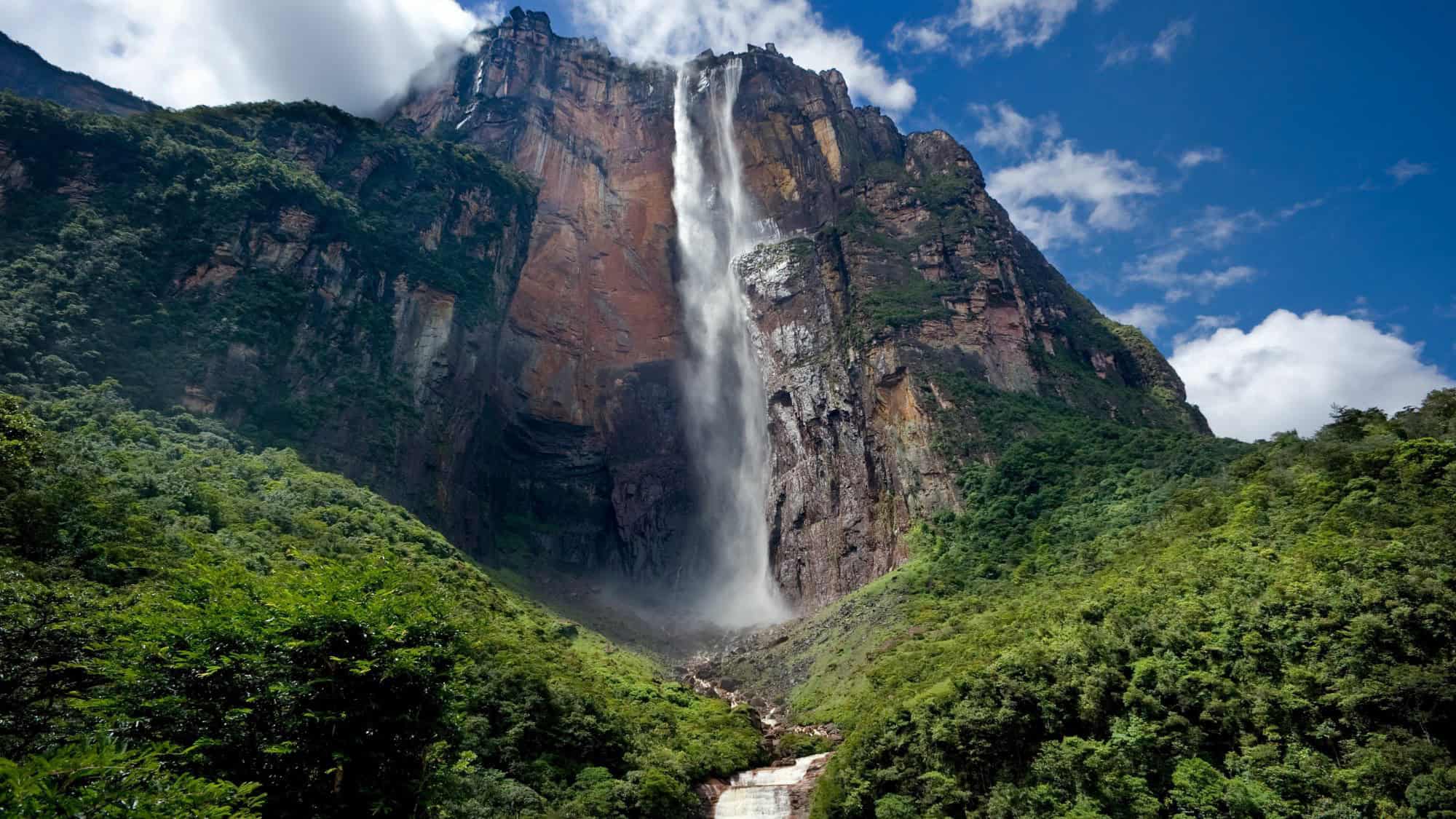
Angel Falls doesn’t just fall, it free-falls. Dropping 3,212 feet from the edge of Auyan-tepui mountain in Venezuela’s Canaima National Park, it’s the tallest uninterrupted waterfall on Earth. To reach it, you usually take a small plane over jungle-covered mesas, then a river trip that feels straight out of an adventure movie.
But when the pilot dips the wing and you see that silver thread of water slicing through clouds, it’s hard not to gasp. The falls were named after American aviator Jimmy Angel, who accidentally landed nearby in the 1930s and probably had the world’s most dramatic “wrong turn.”
During rainy season, the cascade is thunderous, but even in drier months, mist lingers like smoke over the forest. And the surrounding landscape is dotted with tepuis, or table-top mountains, each one a world unto itself with plants and animals found nowhere else.
Atacama Desert, Chile

Stretching between the Pacific Ocean and the Andes Mountains, this otherworldly expanse in northern Chile looks more lunar than earthly. Did you know that the Atacama Desert is so dry that some weather stations here have never recorded rain? Yep, yet somehow life clings on.
You’ll find flamingos feeding in salt lagoons, vicunas grazing near snow-dusted volcanoes, and fields of purple when rare rains trigger “desierto florido” (a desert bloom that transforms the sand into a carpet of flowers).
San Pedro de Atacama serves as the base for exploring, with geysers at El Tatio, the alien-like Valle de la Luna, and some of the clearest night skies on Earth. Astronomers flock here for stargazing so sharp you might question your eyesight. And temperatures swing wildly, from near freezing at dawn to over 80°F by afternoon, so layer up.
Perito Moreno Glacier, Argentina & Chile
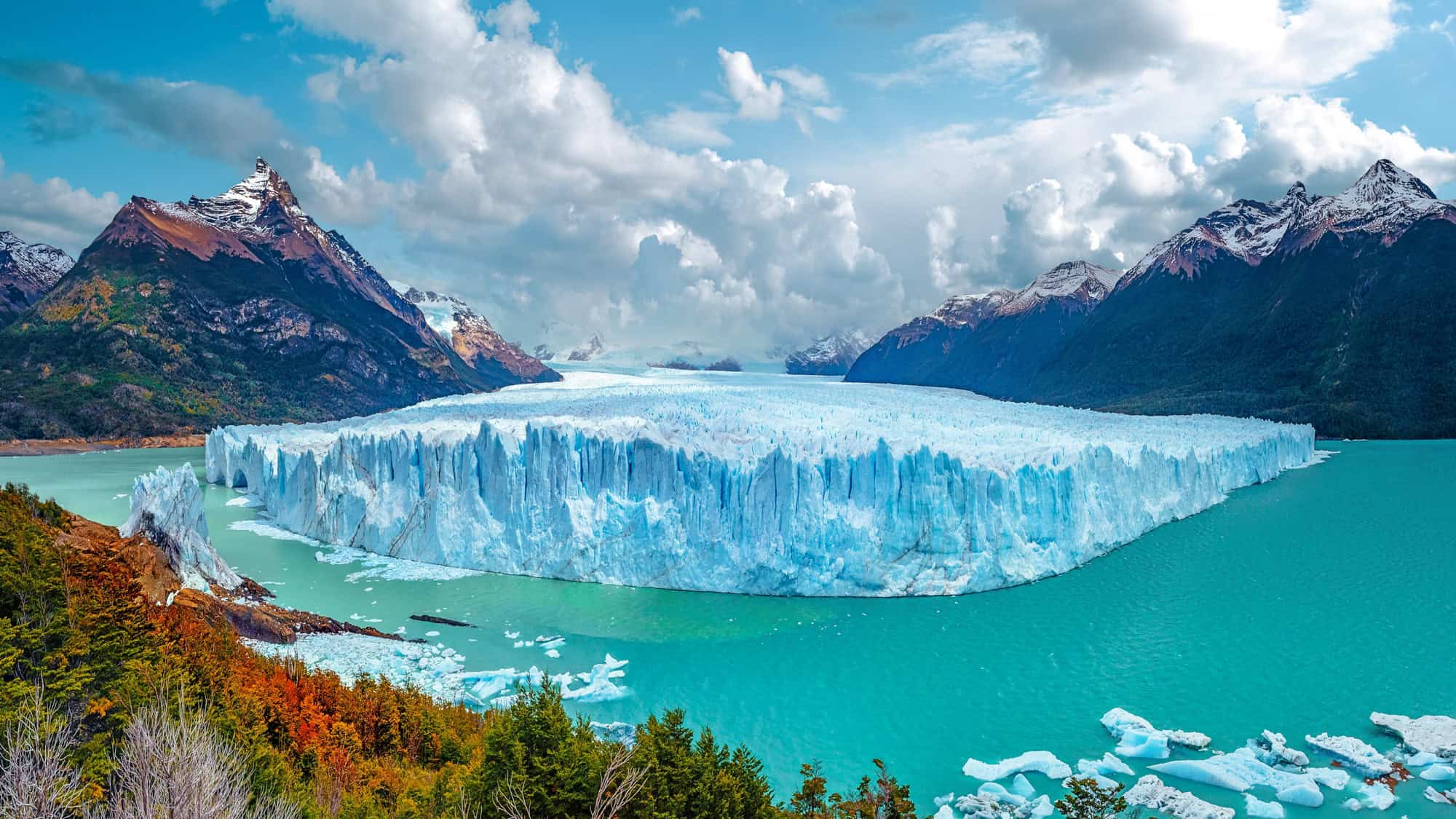
Perito Moreno Glacier doesn’t believe in staying quiet. Located in Los Glaciares National Park near El Calafate, Argentina, this 19-mile-long ice giant groans, cracks, and occasionally explodes with thunderous chunks breaking into Lake Argentino.
The glacier is fed by the Southern Patagonian Ice Field, which spans Argentina and Chile, a reminder that nature doesn’t care much about borders. And unlike many glaciers around the world, Perito Moreno is surprisingly stable, meaning it’s not retreating at a rapid rate. Yet.
Visitors can stroll the network of viewing platforms or take a boat to feel the icy breeze firsthand. Bring gloves and patience, but catching an ice calving will make it all worth the cold temperatures. For the truly adventurous, guided treks let you walk on the glacier’s surface with crampons, peering into blue crevasses and meltwater pools so clear they look fake.
Lake Titicaca, Peru & Bolivia

High in the Andes at nearly 12,500 feet, Lake Titicaca gleams like a sapphire set among mountains. It’s the largest lake in South America and one of the highest navigable lakes in the world. The air is thin, but the culture is rich.
The Uros people live on floating islands made entirely of reeds, adding layers every few months to stay afloat. And their homes, boats, and even kitchens are crafted from the same golden totora reeds. On the Bolivian side, Isla del Sol and Isla de la Luna hold Incan ruins said to be the birthplace of the sun and moon gods.
The water can look tropical, but don’t be fooled; it’s glacier-fed and chilly enough to remind you you’re in the mountains. So whether you arrive from Puno, Peru, or Copacabana, Bolivia, Lake Titicaca feels both peaceful and alive, a place where sky and water seem to trade secrets.
Colca Canyon, Peru

If you think the Grand Canyon is deep, Colca Canyon says, “Hold my llama.” Twice as deep as its North American cousin, this Peruvian marvel carves through volcanic rock and terraced fields that date back to pre-Incan times.
It’s one of the best places to spot the Andean condor, a bird so majestic it looks like it was designed for slow-motion flight scenes. Visitors often gather at the Cruz del Condor viewpoint at sunrise to watch them glide effortlessly on thermal currents, barely flapping their wings.
The canyon is also home to small villages where locals still dress in traditional embroidered clothing and trade at weekly markets. Hiking here means endless switchbacks, river crossings, and the occasional donkey convoy. But hot springs near Chivay offer a well-earned soak afterward.
Valle De Cocora, Colombia

If Dr. Seuss had designed a valley, it might look like Valle de Cocora. Situated in Colombia’s coffee region, it’s home to the world’s tallest palm trees (the wax palm), which can soar more than 200 feet into the misty sky.
Start your hike from the charming town of Salento, where colorful houses line cobblestone streets and fresh coffee is basically a religion. The trail winds through emerald hills, cloud forests, and open meadows dotted with cows that seem to appreciate the view too. Many visitors choose to ride horses up part of the trail as well… a choice your knees might thank you for later.
The area sits within Los Nevados National Natural Park, meaning it’s rich in hummingbirds, orchids, and photo ops that could fill an entire memory card. Mornings bring rolling fog, afternoons sunshine, and every hour feels different . Kind of like Colombia itself.
Galapagos Islands, Ecuador

Visiting the Galapagos feels like stepping into evolution’s private studio. This volcanic archipelago, about 600 miles off Ecuador’s coast, is where Charles Darwin first noticed those famous finches, but the real show is how fearless the wildlife remains.
Sea lions nap on park benches, blue-footed boobies dance like no one’s watching, and giant tortoises amble through misty highlands. The islands are a national park as well as a UNESCO World Heritage Site, with strict visitor limits to protect fragile ecosystems.
Cruises and guided tours balance adventure with conservation, taking you snorkeling with penguins one day and hiking lava fields the next. And each island feels unique: Espanola for waved albatross, Bartolome for its postcard-perfect view, and Isabela for its volcanic lakes.
Islas Ballestas, Peru
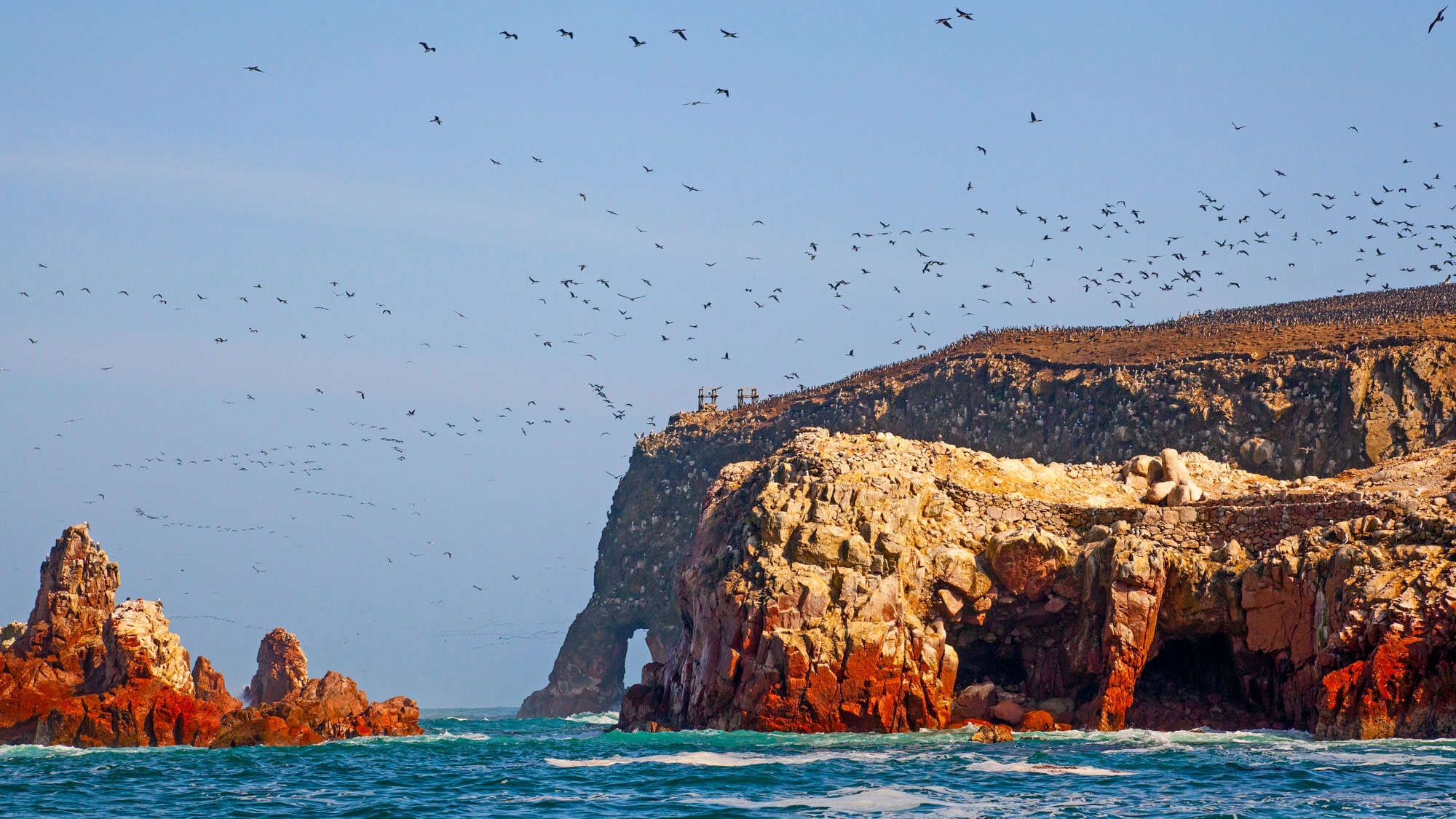
The Islas Ballestas off Peru’s southern coast are often called “the poor man’s Galapagos,” though the wildlife here would probably disagree with that label.
Reached by boat from the town of Paracas, these rocky islands are packed with life, including Humboldt penguins waddling along the cliffs, sea lions lounging noisily on the rocks, and thousands of seabirds wheeling above, doing their best to add an aromatic layer to the experience. On the way, boats pass the Paracas Candelabra, a massive geoglyph carved into the hillside, its meaning still up for debate.
The islands are protected, so visitors can’t set foot on them, but the boat tours glide close enough to make binoculars optional. It’s loud, smelly, and absolutely fantastic. The best time to visit is during the dry season from May to November, when the seas are calmer and wildlife sightings are plentiful.
Mount Aconcagua, Argentina

Mount Aconcagua doesn’t need to shout to impress. At 22,837 feet, it’s the tallest mountain outside of Asia and the undisputed king of the Andes. Located in Argentina’s Mendoza Province, this giant lures climbers from all over the world who want a taste of high-altitude glory without needing oxygen tanks (though that’s still debatable once you’re above 20,000 feet).
For non-climbers, the views from the surrounding valleys are reason enough to visit. The Horcones Valley trail offers a popular day hike to the Plaza de Mulas base camp, where you can stare up and wonder what possessed people to climb it in the first place.
Summer, from December to February, is prime trekking season, when snow recedes and wildflowers dot the slopes. But even from a distance, Aconcagua is mesmerizing. Just keep an eye on the wind; gusts here can knock over signs and, occasionally, the overconfident.
Pantanal Wetlands, Brazil

The Pantanal Wetlands might not get as much hype as the Amazon, but it’s arguably the best place in South America to spot wildlife. Covering about 81,000 square miles, nearly the size of Kansas (our very own home state), this UNESCO-listed region sprawls across Brazil, Bolivia, and Paraguay. Though Brazil’s Mato Grosso do Sul state holds the largest slice.
During the rainy season, about 80 percent of it floods, creating a shimmering mosaic of lagoons and islands teeming with life. Jaguars are the star attraction here. Did you know your odds of seeing one are higher than anywhere else in the Americas? Add to that capybaras, caimans, giant otters, and enough birdlife to make even seasoned twitchers lose composure.
The dry season from May to September offers the easiest animal viewing when waters recede and wildlife crowds the riverbanks. Many travelers base themselves in Porto Jofre for guided safaris by boat or jeep. Just remember: the mosquitoes here are ambitious, so come prepared.
Mylodon Cave, Chile

In southern Chile’s Patagonia region, Mylodon Cave hides a prehistoric secret. It turns out, this enormous limestone cavern near Puerto Natales once sheltered the mylodon, a giant ground sloth that roamed the area about 10,000 years ago. It was about 10 feet tall and 2000 pounds, so similar to a grizzly bear today. A life-sized replica stands at the entrance… and yes, everyone takes the same goofy photo hugging it.
The cave itself stretches nearly 650 feet long, with walkways that lead you past ancient stalactites and rock walls smoothed by wind and time. Archeologists have uncovered bones, tools, and even pieces of skin preserved by the cold.
The surrounding park, Monumento Natural Cueva del Milodon, also offers hiking trails with views toward the Torres del Paine mountains on clear days. It’s a short drive from town, easy to explore in an afternoon, and a fascinating reminder that South America’s wonders aren’t only scenic, they’re also steeped in stories written long before us.
Like Our Content? Follow Us on MSN (or click the Follow Button above) for more from Discover Parks & Wildlife.
15 Astonishing Natural Rock Formations That Defy Belief
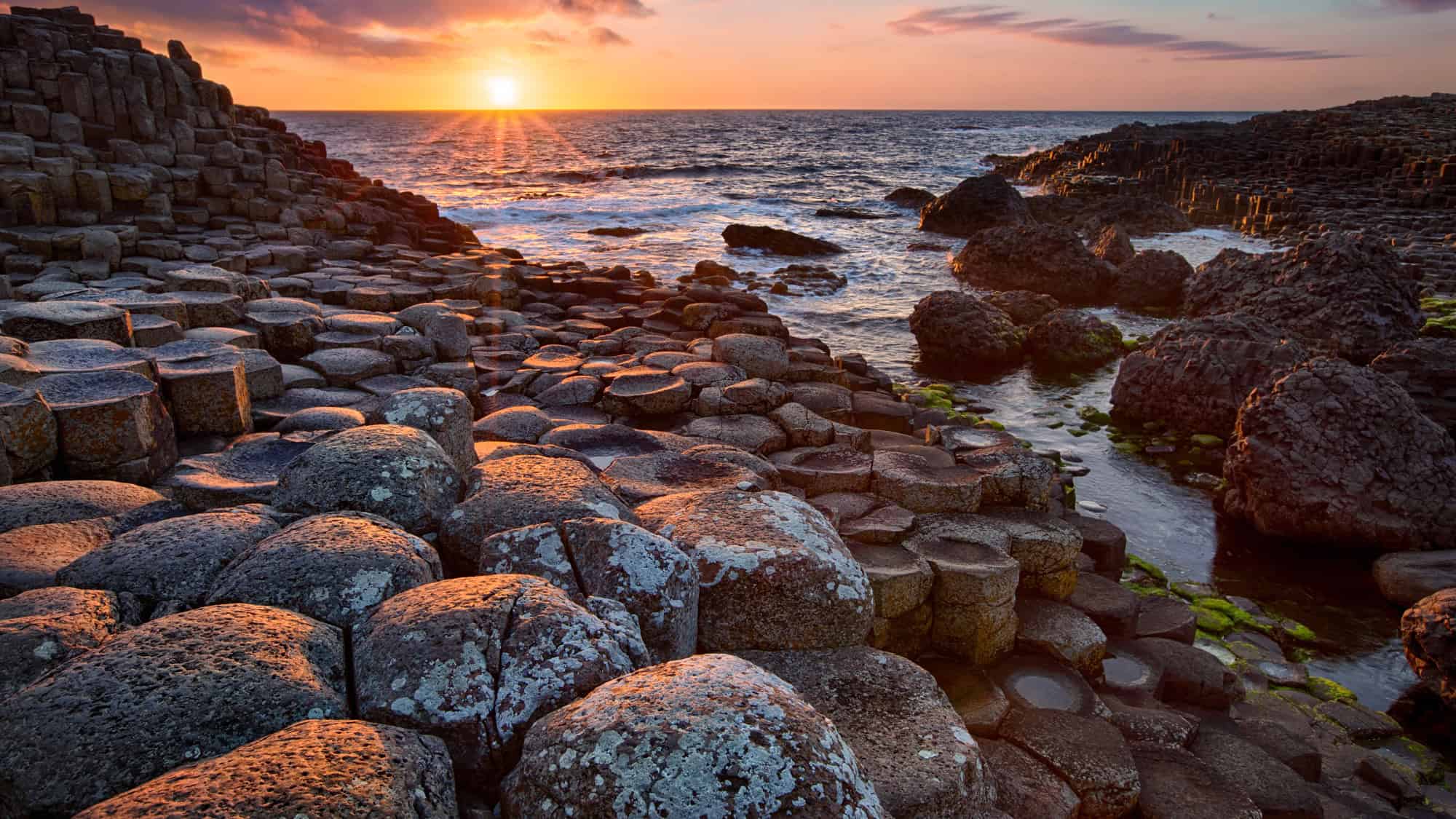
Prepare to have your mind twisted like a pretzel as you explore mind-blowing rock formations that look like nature was inhaling sand and exhaling pure magic.
12 Volcanic Wonders You Can Actually Walk On

Take a stroll through a smoldering landscape that’s more than a little fiery. Who wouldn’t want to tiptoe across nature’s hot plates and feel like a contestant on a daring survival show where the ground could literally be lava?
12 Natural Wonders You Have To See To Believe
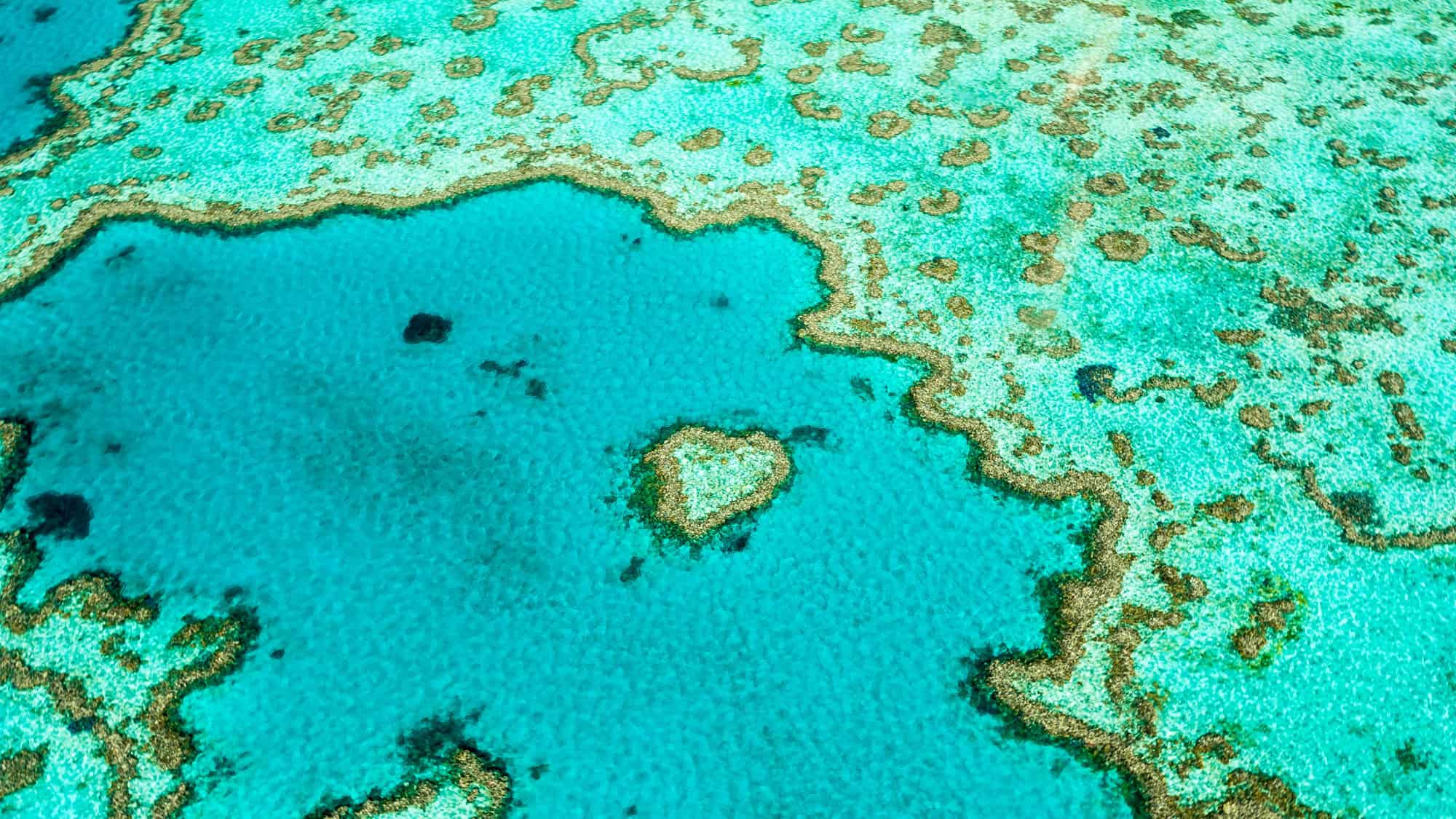
Get ready to have your mind spectacularly blown as you embark on a whirlwind tour of natural wonders so jaw-dropping that they’ll make your social feed look like it’s been all dressed up with nowhere to go.






